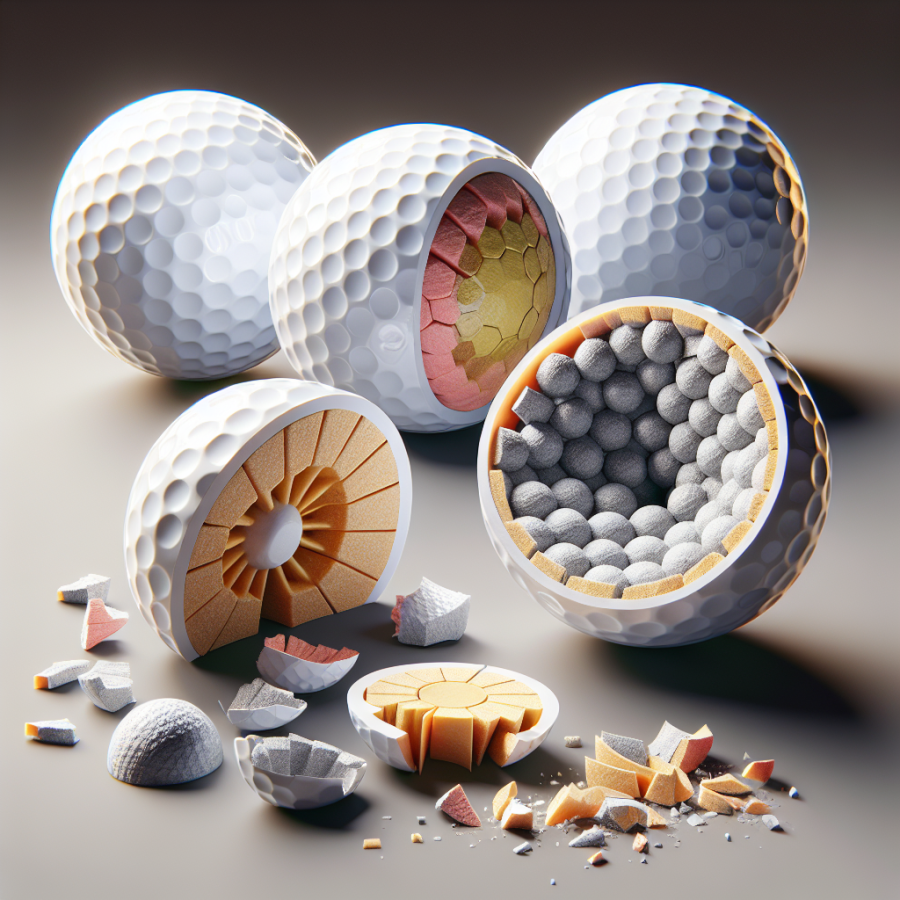Revealing the Inside Story: Are Golf Balls Really Hollow?
Golf is an exciting game influenced by various factors, such as the material of the golf club, the swing speed, and, importantly, the design and structure of the golf ball itself. One of the common questions or misunderstandings surrounding this sport is whether golf balls are hollow inside as many believe. In this article, we are going to unravel the true nature of golf ball structure.
One of the reasons why people believe that golf balls are hollow could be the characteristic 'ping' sound they make when struck. This sound seems similar to the sound produced by hollow objects. In reality, however, golf balls are not hollow but rather are designed with specific internal layers and materials that enhance their performance.
At the core of a typical golf ball is a rubber-like material often described as a 'solid rubber ball.' Around that core are tightly wound rubber threads, and fully enclosing these threads and the core together is a hard, cut-proof shell typically made from a tough plastic known as Surlyn. However, modern golf balls have evolved to include a variety of different materials like urethane and have more than one core layer. While the core might appear hollow due to the presence of a round gap or space in the center, this is basically the mold line where the two halves of the core are joined during manufacturing.
The design of the golf ball varies depending on the manufacturers and the specific performance characteristics they aim to deliver. While some balls feature a two-piece design with a large, solid core and a tough outer shell, others might have three, four, or even five layers – each with a specific role to play in impacting the responsiveness, spin, control, and distance achievable with the ball.
High-performance balls typically have a multi-layer design with a soft and small inner core and larger outer core. The innermost core is designed to be responsive to low-swing speeds, while the larger outer core becomes more involved as the swing speed increases, thereby providing greater flexibility and control to advanced golfers who can manipulate their swing speed.
The dimpled surface of the golf ball adds another important element to the mix. These dimples are designed to decrease air drag and increase lift, helping the ball to fly further through the air. Contrary to popular belief, these dimples do not indicate a hollow structure within the ball.
To conclude, the belief that golf balls are hollow is, indeed, a myth. The internal structures of golf balls are carefully engineered to achieve optimal performance characteristics.
Read also:
The Origins of Soccer: A Journey Through its Inventive History
Dissecting the Myth: The Actual Composition of a Golf Ball
Golf has long been surrounded by various myths and misconceptions. Amongst these is the common belief that golf balls are hollow. This article sets out to debunk these misconceptions and provide an authentic overview of a golf ball's real composition.
A prominent myth about golf balls is that they are hollow. The truth, however, is the exact opposite. Golf balls are not hollow; in fact, they have a solid core that is surrounded by an external layer. Interestingly, the core of a golf ball makes up more than half of its weight.
Depending on the type of golf ball, the core is composed of rubber, ionomer resin, or a mixture of both. Rubber cores are made using a composition of synthetic rubber, chemicals, and other additives. On the other hand, ionomer resin cores are formed from a copolymer of ethylene and methacrylic acid.
The chemical compositions of these cores are carefully chosen to influence specific characteristics of the golf ball. For instance, the rubber core is typically used in this application due to its excellent energy resilience, which facilitates the transmission of the force from the golf club to the ball.
Surrounding the core of the ball is the intermediate mantle layer. This layer is primarily composed of rubber or a specialized thermoplastic material called ionomer resin. The mantle layer can often be composed of one or even several layers all designed to influence the performance of the ball. It acts as a bridge, channeling energy from the core to the cover and fine-tuning the ball's spin and feel during play.
The outermost layer or cover of the golf ball is usually made from urethane or Surlyn. Urethane covers are generally softer and have a better feel for short game shots. They tend to provide more backspin on the greens due to their spin separation during launch conditions. Surlyn covers, meanwhile, are more durable and result in less spin on short game shots, making them better for longer distances.
Interestingly, some golf balls have an extra layer between the inner core and the external cover. This additional layer is used to manipulate the golf ball's spin rates and launch conditions, providing players with more control over their shots.
The dimples on a golf ball's surface are not just for aesthetic purposes. They have a definitive function that impacts the ball's flight physics. The dimples modify the ball's turbulence, reducing drag and helping the ball to lift and stay in the air longer.




